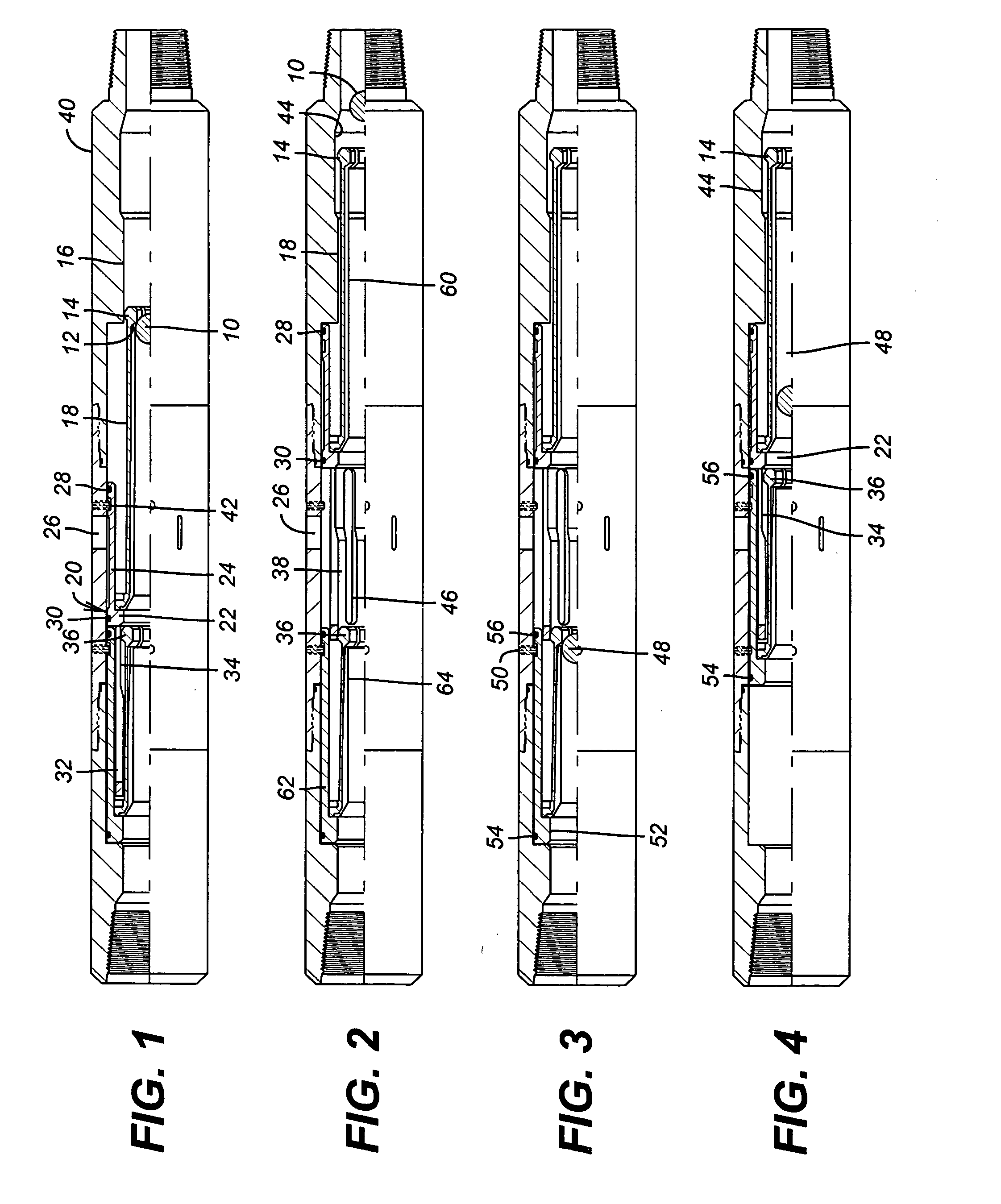Ball drop circulation valve
a circulation valve and ball drop technology, applied in the direction of fluid removal, borehole/well accessories, construction, etc., can solve the problems of difficult to know, less suitable for deviating wellbores, and prone to eroded balls, so as to reduce the dimension
- Summary
- Abstract
- Description
- Claims
- Application Information
AI Technical Summary
Benefits of technology
Problems solved by technology
Method used
Image
Examples
Embodiment Construction
[0014]FIG. 1 illustrates the position of one module of the present invention after run in and the dropping of a ball 10 to land on a seat 12. Seat 10 is formed of a series of abutting collet heads 14 that are supported in bore 16. The collet heads 14 are mounted to a series of collet fingers 18 that extend from piston 20. Piston 20 comprises a ring 22 with a solid sleeve 24 extending down from it. In the run in position, a flow port 26 is covered by sleeve 24 and is closed because seals 28 and 30 straddle port 26. An upper segment 32 is connected to ring 22 for tandem movement. It has a larger internal diameter 34 that is initially opposed to collet heads 36 in a manner that preferably gives them no support so that ball 10 can readily pass through collet heads 36 in the FIG. 1 configuration without getting hung up. Upper segment 32 has a reduced diameter 38 shown in FIG. 2 that can come into position behind the collet heads 36 to give them full support, as will be described later.
[0...
PUM
 Login to View More
Login to View More Abstract
Description
Claims
Application Information
 Login to View More
Login to View More - R&D
- Intellectual Property
- Life Sciences
- Materials
- Tech Scout
- Unparalleled Data Quality
- Higher Quality Content
- 60% Fewer Hallucinations
Browse by: Latest US Patents, China's latest patents, Technical Efficacy Thesaurus, Application Domain, Technology Topic, Popular Technical Reports.
© 2025 PatSnap. All rights reserved.Legal|Privacy policy|Modern Slavery Act Transparency Statement|Sitemap|About US| Contact US: help@patsnap.com


